Musical Performance : Drums, Transverse Flute and Bamboo Clappers
Engraving from a Southern Song tomb at Luojiaqiao 羅家橋 in Guangyuan, Sichuan
During the Tang dynasty (618–907) and the Northern Song (960–1127) the main musical instrument used for the accompaniment of popular songs was the four-stringed lute (pipa 琵琶) (see One to Twenty in Jurchen, Khitan and Lute). However, during the Southern Song (1127–1276) popular songs were more frequently sung to the accompaniment of a flute or other wind instrument. The Southern Song scholar, musicologist and poet, Jiang Kui 姜夔 (c. 1155 – c. 1221), was an aficionado of popular music, and, unlike most of his contemporaries, he wrote lyric poetry for actual musical performance, accompanied by a flute or other wind instrument. Jiang Kui noted that he would often play the end-blown xiao flute while a girl sang his lyrics and beat time by clapping her hands. In addition he would sometimes get his lyrics accompanied by a professional musician playing the bili 觱篥 (a bamboo pipe with a double reed that originated from Kucha) or the mute bili 啞觱篥 (a version of the bili with a reduced resonance box), which he considered to have a finer sound than the xiao flute. Jiang Kui not only wrote lyrics, he also composed the accompanying flute music for some of his lyric poems.
Jiang Kui's lyric poem "Hidden Fragrance" 暗香 with flute notation
Source: Baishi Daoren Gequ 白石道人歌曲 (Sibu Congkan 四部叢刊 vol.1296)
In contrast to Jiang Kui's literary versions of popular music, which only involved two people, popular song performances during the Southern Song and Yuan dynasty generally involved a trio of performers (male or female): one playing a transverse di flute, one playing a drum (usually on a stand, but sometimes suspended around the neck), and one singing whilst beating time with bamboo clappers (拍板). Depictions of such musicians occur in a number of Song and Yuan dynasty tomb murals (e.g. here andhere), as well as in Yuan dynasty book illustrations (e.g. here and here).
Popular Yuan dynasty pastimes : Music, Football and Falconry
Source : Shilin Guangji 事林廣記 (1330–1333 ed.) Continuation ch. 7 folio 2
The encyclopedia of popular knowledge, Shilin Guangji 事林廣記 (originally compiled by Chen Yuanjing 陳元靚 during the Southern Song, but extant editions dating from the Yuan and early Ming), incorporates much information on popular music forms, including flute scores for a set of seven tunes:
Set of seven flute tunes set to the Huangzhong-gong mode
Source : Shilin Guangji 事林廣記 (1330–1333 ed.) Continuation ch. 7 folio 10
The system of flute notation used in Shilin Guangji is the same as that used by Jiang Kui, and comprises ten basic signs that are derived by simplification or cursification from Chinese characters. These ten notational signs are listed by Zhu Xi 朱熹 (1130–1200) in his Qinlü Shuo 琴律說, as well as in the History of the Liao (although all of the editions of the History of the Liao that I have seen write the signs as their corresponding Chinese characters), but the only detailed description of this system of flute notation is given by Zhang Yan 張炎 (1248–c.1314) in his treatise on lyric poetry, Source of Lyrics 詞源, written during the Southern Song (parts of Zhang Yan's treatise relating to popular music and flute notation are also included in Shilin Guangji). Zhang Yan's treatise provides a theoretical framework for the form of popular music that uses such flute notation, but this differs significantly from the actual flute music of Jiang Kui and in Shilin Guangji (the system of modes defined by Zhang Yan uses the ten notational signs to represent sixteen notes corresponding to the twelve notes of Chinese classical music and the first four "clear" notes of the higher octave by encircling some of the signs, but encircled signs do not occur in actual flute scores). There are only a very few surviving examples of Song and Yuan dynasty flute scorees that use this system of notation:
- 17 lyric poems with flute notation in the collection of Jiang Kui's songs and poetry, Baishi Daoren Gequ 白石道人歌曲 ("Songs of the White Stone Daoist"). This work was first published in 1202, but became lost during the Ming dynasty, and was only rediscovered during the early Qing dynasty when a late Yuan manuscript copy of an edition dated 1360 belonging to Tao Zongyi 陶宗儀 was found. All extant editions of Baishi Daoren Gequ are derived from copies of this manuscript, which is now lost. Of the 17 tunes with flute notation in this collection, fourteen were composed by Jiang Kui, one was derived from a Tang dynasty tune, one was adapted by Jiang Kui from an old lute tune, and one was composed by Jiang Kui's good friend Fan Chengda 范成大 (1126–1193).
- A set of 7 flute tunes without lyrics in Shilin Guangji 事林廣記. These tunes are included in the edition of 1330–1333, as well as in the 1699 Japanese reprint of a 1325 edition, together with a unique score for drum and clappers (the music sections ofShilin Guangji are reprinted in Zhongguo Gudai Yinyue Shiliao Jiyao 中國古代音樂史料集要 (Beijing, 1962) pages 687–702 [1330–1333 ed.], 703–714 [1340 ed.] and 715–725 [1325 ed.]).
- 3 short pieces copied by the late Ming author Wang Jide 王驥德 from the now lost Yuan dynasty anthology of Song and Yuan dynasty music and lyrics, Yuefu Hunchengji 樂府渾成集 (see Wang Jide's Qu Lü 曲律 vol. 4 folios 2b–3a). In about 1610 Wang Jide was shown a single volume of Yuefu Hunchengji, containing over two hundred pieces, and as he was unable to read the musical notation in it he copied out these three short pieces as an example, unfortunately thereby dooming the rest of this treasure trove of music to annihilation.
The ten basic signs used in the above sources are tablature signs, each representing a particular fingering of the six finger holes of a flute or other wind instrument (with some slight variations the same fingering is used for all such instruments).
| Relative Value | Notation Sign | Chinese Character† | Pinyin | Fingering‡ | Notes |
|---|---|---|---|---|---|
| 2′ |  | 五 | wǔ | ●●●●●○ | An octave above sì |
| 1′ |  | 六 | liù | ○●●●●● | An octave above hé |
| 7 |  | 凡 | fán | ○●●○○● | |
| 6 |  | 工 | gōng | ●○○●●● | |
| 5 |  | 尺 | chě | ●●○○●● | |
| 4 ♯ |  | 勾 | gōu | ●●○●●● | The notes gōu and shàng are mutually exclusive, their usage depending on the mode of the tune. |
| 4 |  | 上 | shàng | ●●●○○● | |
| 3 |  | 一 | yī | ●●●●○○ | |
| 2 |  | 四 | sì | ●●●●●○ | |
| 1 |  | 合 | hé | ●●●●●● |
† Nine of the ten Chinese characters corresponding to these signs are still used today in traditional Chinese musical notation (gongchepu 工尺譜), and some forms of religious and folk music still preserve signs that are the same as those used for Song and Yuan dynasty flute notation. However, the modern gongchepu notation and the notational systems used in religious and folk music are systems of pitch notation, not tablature as was the case for flute notation during the Song and Yuan dynasties.
‡ Fingering is based on the diagram given in Shilin Guangji (see Zhongguo Gudai Yinyue Shiliao Jiyao page 721). Black circles represent closed holes, and white circles represent open holes; the blow hole is not shown but would be to the right of the six finger holes.
Given the rarity of surviving examples of this system of musical notation, any new discovery of a manuscript with such flute notation is very exciting. One example of flute notation that has been overlooked by musicologists occurs on the last page of a manuscript book of Tangut rhyme tables, Dissected Rhymes of the Five Sounds 


 , held at the Institute of Oriental Manuscripts in St Petersburg (call number Tang. 22/1, new inventory No. 86, old inventory No. 620).
, held at the Institute of Oriental Manuscripts in St Petersburg (call number Tang. 22/1, new inventory No. 86, old inventory No. 620).



 , held at the Institute of Oriental Manuscripts in St Petersburg (call number Tang. 22/1, new inventory No. 86, old inventory No. 620).
, held at the Institute of Oriental Manuscripts in St Petersburg (call number Tang. 22/1, new inventory No. 86, old inventory No. 620).
IOM Tang. 22/1 page 39a
The ten large signs on this page have been recognised as examples of musical notation since at least 1965, when Eric Grinsteadvisited Leningrad and noted their similarity to musical notation in manuscripts held elsewhere (Terentʹev-Katanskij 1981 p. 73). However, eminent Tangutologists who have studied this book, including Nishida Tatsuo and Li Fanwen, have failed to realise what the signs signified, and have been unable to provide convincing readings for the small Tangut characters next to the signs. Nishida did not offer any readings of the ten small Tangut characters, and referred to the signs as "unrecognisable writing" 不明の文字 (Nishida 1983 p. 83), and although Li Fanwen offered some possible readings for the small Tangut characters, he noted that "to this day the Tangut characters and symbols are a mystery" 西夏文和符号,至今是个谜 (Li Fanwen 2006 p. 275). However, the single column of six Tangut characters to the left of the notation signs is relatively clear, and the first five characters have been read by Nevskij, Nishida and Li Fanwen as the date 



 "Qianyou era, cyclical year guisi", that is to say, the 4th year of the Qianyou era (1173). The sixth character is not clearly written, but could be the character
"Qianyou era, cyclical year guisi", that is to say, the 4th year of the Qianyou era (1173). The sixth character is not clearly written, but could be the character  "month", although Nevskij reads it as
"month", although Nevskij reads it as  "up". This date may be the date that the manuscript was copied out, but as the Tangut characters are not written as clearly or as neatly as the rest of the text it is also possible that they were not written at the same time as the rest of the book, and the date records when the musical signs and associated Tangut characters were written into the manuscript. Either way, it is probable that all the text on the last page of this manuscript was written at the same time, and so we can precisely date the writing of the musical notation in this manuscript to 1173, some thirty years before the first publication of Jiang Kui’s lyrics with flute notation in 1202. This manuscript is thus the earliest known example of the ten-note simplified character system of flute notation.
"up". This date may be the date that the manuscript was copied out, but as the Tangut characters are not written as clearly or as neatly as the rest of the text it is also possible that they were not written at the same time as the rest of the book, and the date records when the musical signs and associated Tangut characters were written into the manuscript. Either way, it is probable that all the text on the last page of this manuscript was written at the same time, and so we can precisely date the writing of the musical notation in this manuscript to 1173, some thirty years before the first publication of Jiang Kui’s lyrics with flute notation in 1202. This manuscript is thus the earliest known example of the ten-note simplified character system of flute notation.




 "Qianyou era, cyclical year guisi", that is to say, the 4th year of the Qianyou era (1173). The sixth character is not clearly written, but could be the character
"Qianyou era, cyclical year guisi", that is to say, the 4th year of the Qianyou era (1173). The sixth character is not clearly written, but could be the character  "month", although Nevskij reads it as
"month", although Nevskij reads it as  "up". This date may be the date that the manuscript was copied out, but as the Tangut characters are not written as clearly or as neatly as the rest of the text it is also possible that they were not written at the same time as the rest of the book, and the date records when the musical signs and associated Tangut characters were written into the manuscript. Either way, it is probable that all the text on the last page of this manuscript was written at the same time, and so we can precisely date the writing of the musical notation in this manuscript to 1173, some thirty years before the first publication of Jiang Kui’s lyrics with flute notation in 1202. This manuscript is thus the earliest known example of the ten-note simplified character system of flute notation.
"up". This date may be the date that the manuscript was copied out, but as the Tangut characters are not written as clearly or as neatly as the rest of the text it is also possible that they were not written at the same time as the rest of the book, and the date records when the musical signs and associated Tangut characters were written into the manuscript. Either way, it is probable that all the text on the last page of this manuscript was written at the same time, and so we can precisely date the writing of the musical notation in this manuscript to 1173, some thirty years before the first publication of Jiang Kui’s lyrics with flute notation in 1202. This manuscript is thus the earliest known example of the ten-note simplified character system of flute notation.
The ten large signs in this manuscript are the ten basic tablature signs used in Song and Yuan dynasty flute notation. As not all tablature signs can be used in the same tune (gōu and shàng are mutually exclusive, their usage depending on the mode of the tune), this cannot be a fragment of a flute tune, but must just be a list of the ten notational signs. The small Tangut characters next to the notational signs are very unclear, and it is difficult to read them with certainty, but I read them as Tangut transliterations of the Chinese names of the note signs, as shown in the table below. There is, however, one error in the Tangut names, as the Tangut characters corresponding to the signs chě and gōng are inadvertently swapped (the transliteration for chě is next to the gōng sign, and the transliteration for gōng is next to the chě sign).
| Flute Notation | Tangut Characters | |||||||
|---|---|---|---|---|---|---|---|---|
| Manuscript Sign | Standard Sign | Chinese Character | Pinyin | Tangut Character | Refs.† | Readings | Meaning | Transliterations‡ |
 |  | 五 | wǔ |  | L1915 K4305 | ·u² ·u² | salt | 五吳烏吾 |
 |  | 凡 | fán |  | L2476 K2760 | xiwa¹ xwâ¹ | flower | 翻項 |
 |  | 尺 | chě |  | L3738 K0557 | kow¹ kon¹ | merit | 工公翁軍貢功 |
 |  | 工 | gōng |  | L4018 K5009 | tśhji² tśhi̯e² | origin, base, root | 尺赤齒滯痴治持池直 |
 |  | 上 | shàng |  | L0009 K5475 | śjwo¹ śi̯o¹ | to arise, to appear, to raise | |
 |  | 一 | yī |  | L1544 | ·ji² | (used for transliteration) | 夷依噎 |
 |  | 四 | sì |  | L2460 K3107 | sə¹ sə¹ | (used for transliteration) | 四斯嗣姒氏司思巳絲死賜 |
 |  | 六 | liù |  | L4153 K0151 | ljiw² li̯eɯ² | to gather | 六略柳陸綠錄 |
 |  | 勾 | gōu |  | L1429 K4586 | kjiw¹ ki̯eɯ¹ | (used for transliteration) | 鳩驕拘高究韭�� |
 |  | 合 | hé |  | L3540 K3252 | xa¹ xa¹ | (used for transliteration) | 合哈褐皓闔河和 |
† References are to the character numbers in Li Fanwen's 2008 Tangut-Chinese Dictionary (prefixed 'L') and Kychanov and Arakawa's 2006 Tangut-Russian-English-Chinese Dictionary (prefixed 'K'). The readings are also taken from these dictionaries (upper reading from Li Fanwen, lower reading from Kychanov).
‡ The "Transliterations" column lists Chinese characters that the corresponding Tangut character may be used to transliterate, according to Li Fanwen’s and Kychanov's dictionaries.
The order of the ten signs given in the manuscript (wǔ, fán, chě, gōng, shàng, yī, sì, liù, gōu, hé) largely follows the natural order of notes, from high to low (wǔ, liù, fán, gōng, chě, gōu, shàng, yī, sì, hé), except that the note signs liù, chě, and gōu are out of order. However, if we assume that the mismatch between the gōng and chě signs and their corresponding Tangut characters is due to the gōng and chě signs having been accidentally written in the wrong order, and that the order of the note signs should follow the order of the Tangut characters, then only the signs liù and gōu are out of order. This corrected order (wǔ, fán, gōng,chě, shàng, yī, sì, liù, gōu, hé) is still incorrect, but now it exactly matches the order of notes given in the History of the Liao Dynasty, where the description of "Great Music" (dayue 大樂 ) lists the ten notes as: wǔ 五, fán 凡, gōng 工, chě 尺, shàng 上, yī一, sì 四, liù 六, gōu 勾, and hé 合. It cannot be a coincidence that both the editors of the History of the Liao Dynasty (composed 1342–1343) and the scribe of the Tangut manuscript, writing in 1173, used the same incorrect order, and suggests that they were both copying from a common source, perhaps a Liao dynasty work on Khitan music or the lost History of the Liao Dynastycompiled during the Jin dynasty.
In addition to IOM Tang. 22/1, there is one other Tangut manuscript from Kharakhoto on which flute notation signs can be found. This is a Tangut manuscript fragment held at the British Library (call number Or. 12380/21) which has a single line of partially obliterated signs that are very similar to those on IOM Tang. 22/1.
British Library Or. 12380/21
The ten or eleven signs in this fragment are given in almost the same order as the signs in IOM Tang. 22/1, and would also seem to be a list of the ten notational signs. The Tangut text by which the signs are written does not seem to be related to music, and the signs were probably scribbled on to the paper second hand at a later date.
| Or. 12380/21 | Tang. 22/1 | Chinese | Pinyin |
|---|---|---|---|
 |  | 五 | wǔ |
 |  | 凡 | fán |
 |  | 尺 | chě |
 ? ? |  | 工 | gōng |
 or or  ? ? |  | 上 | shàng |
 |  | 一 | yī |
 ? ? | 尺 | chě | |
 or or  ? ? |  | 四 | sì |
 ? ? |  | 六 | liù |
 |  | 勾 | gōu |
 |  | 合 | hé |
The fact that the list of ten flute notation signs are found on two different Tangut manuscripts makes it seem highly likely that the form of popular flute music prevalent in the territories of the Song and Liao empires was also practised within the Tangut state. This raises the intriguing possibility that somewhere, waiting to be discovered, are manuscript flute scores with accompanying Tangut lyrics.
Bibliography
- Li Fanwen 李範文. "'Wuyin qieyun' yu 'Wenhai baoyun' bijiao yanjiu" 《五音切韵》与《文海宝韵》比较研究 [Comparative study of the 'Dissected rhymes of the five sounds' and the 'Precious rhymes of the sea of characters']. In Xixia Yanjiu 西夏研究 [Tangut Research], vol. 2. Beijing: Chinese Academy of Social Sciences, 2006.
- Nishida Tatsuo 西田龍雄. "Seikago inzu 'Goin setsuin' no kenkyū (ge)" 西夏語韻図『五音切韻』の研究(下) [A Study of the Xixia rhyme tables "Wu yin qie yun" (3)]; Kyōto Daigaku Bungakubu Kenkyū Kiyō 京都大學文學部研究紀要 [Memoirs of the Department of Literature, Kyoto University] 22 (1983): 1–187.
- Terentʹev-Katanskij, Anatolij Pavlovič (Терентьев-Катанский, Анатолий Павлович). Книжное дело в государстве тангутов [Book publishing in the Tangut state]. Moscow: Nauka, 1981.
- West, Andrew C. "Poem or Song? An Analysis of Ci Musical Notation". Unpublished paper. Princeton University, January 1990 (revised September 1992).
- West, Andrew. "Musical Notation for Flute in Tangut Manuscripts". In Irina Popova (ed.), Тангуты в Центральной Азии: сборник статей в честь 80-летия проф. Е.И.Кычанова [Tanguts in Central Asia: a collection of articles marking the 80th anniversary of Prof. E. I. Kychanov] pp.443–453. Moscow: Oriental Literature, 2012. ISBN 978-5-02-036505-6
- Wei An 魏安 [Andrew West] (Tang Jun 汤君 trans.). "Xixia xieben zhong de dipu" 西夏写本中的笛谱 [Musical Notation for Flute in Tangut Manuscripts]; Xixia Yanjiu 西夏研究 [Tangut Research] 2012.4: 43–48.
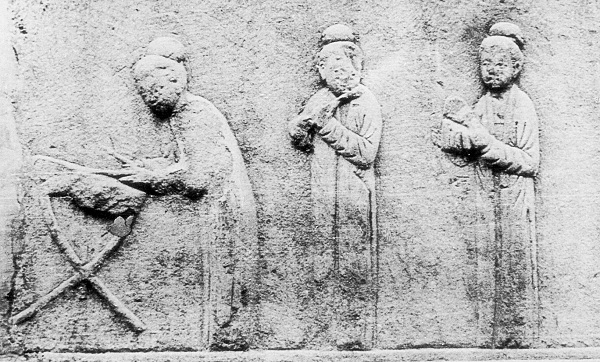
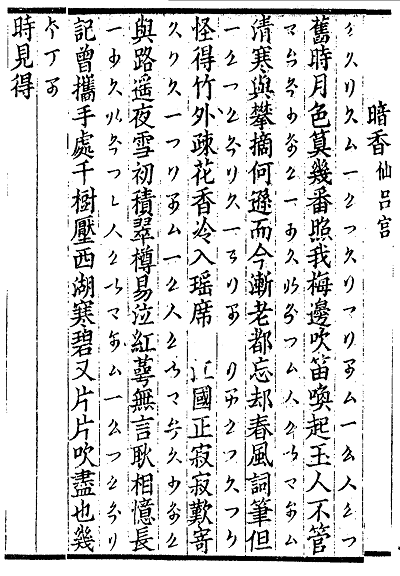
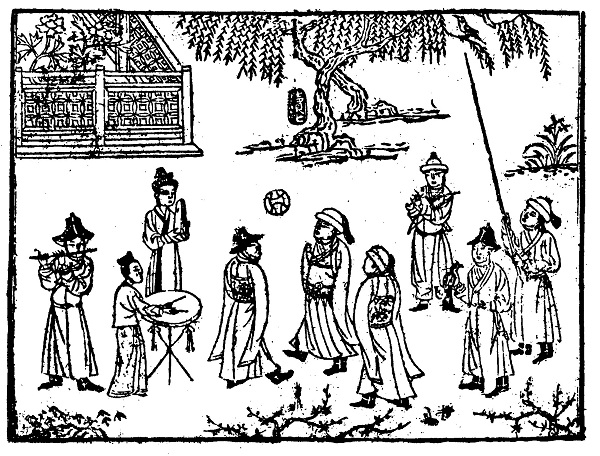
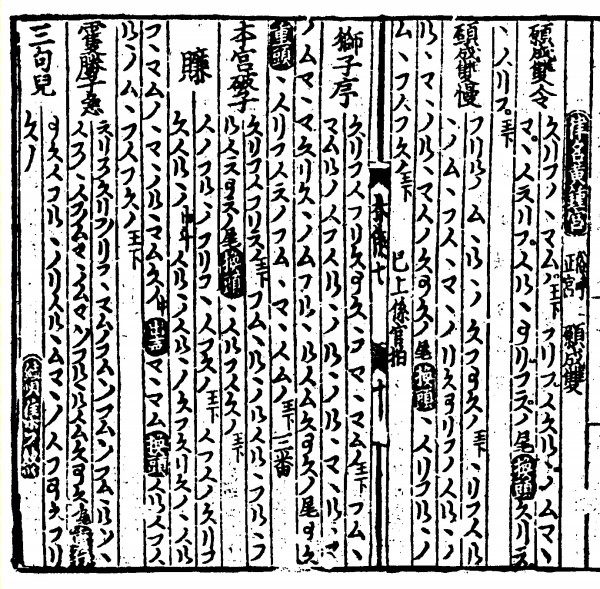
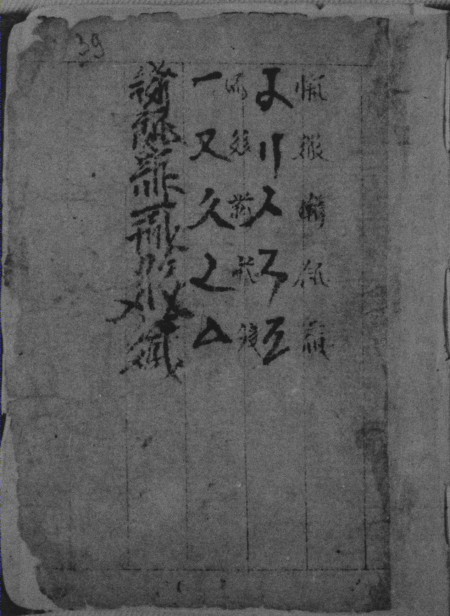
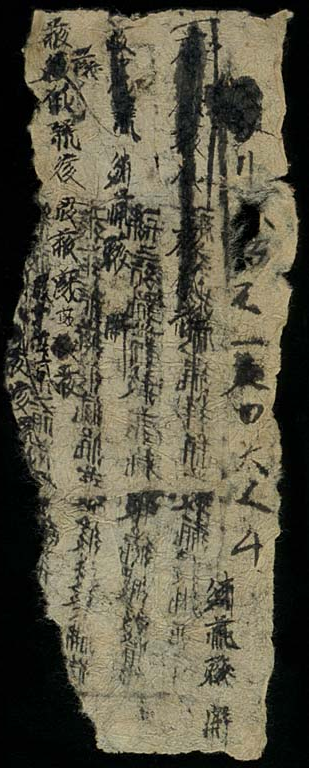
No comments:
Post a Comment